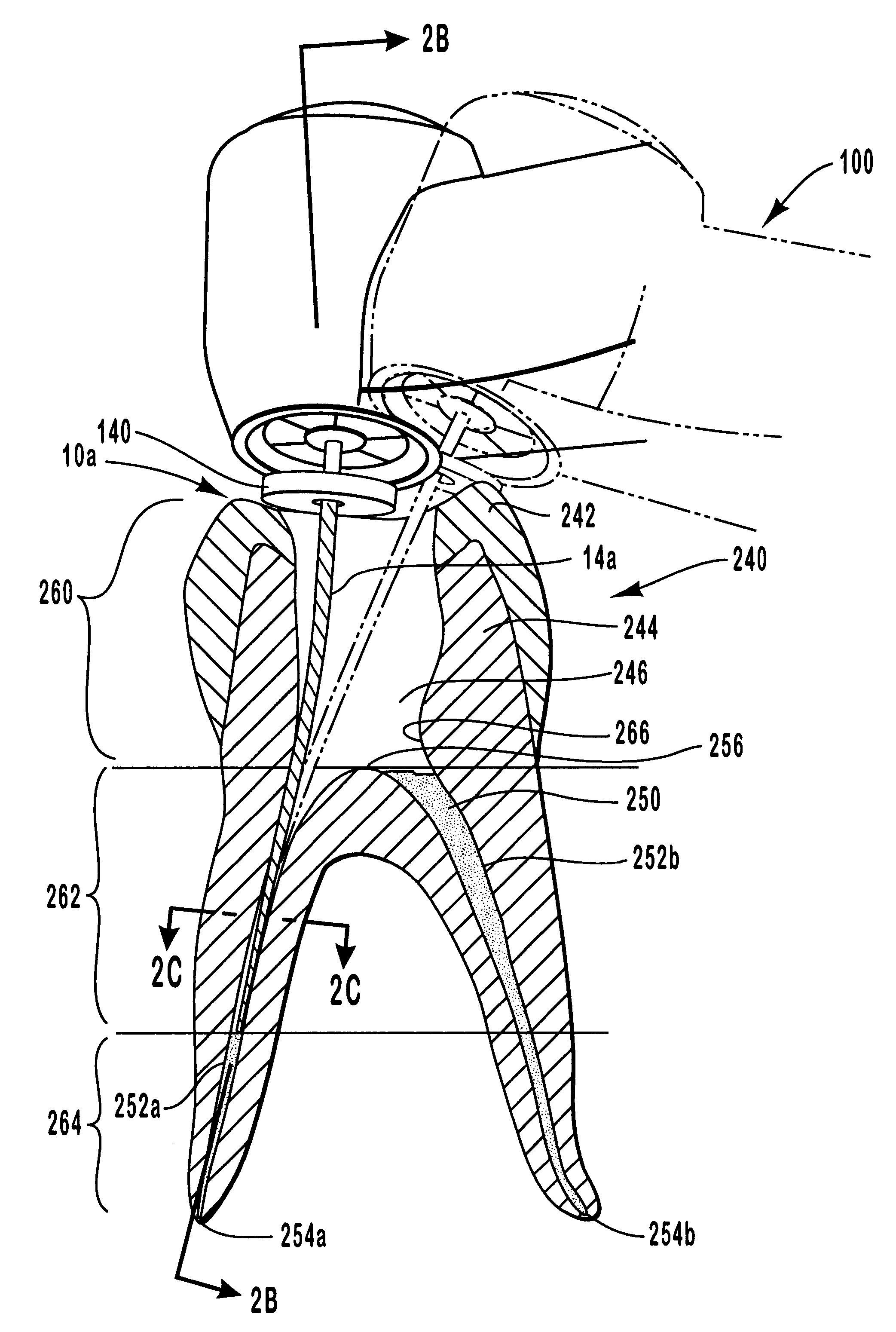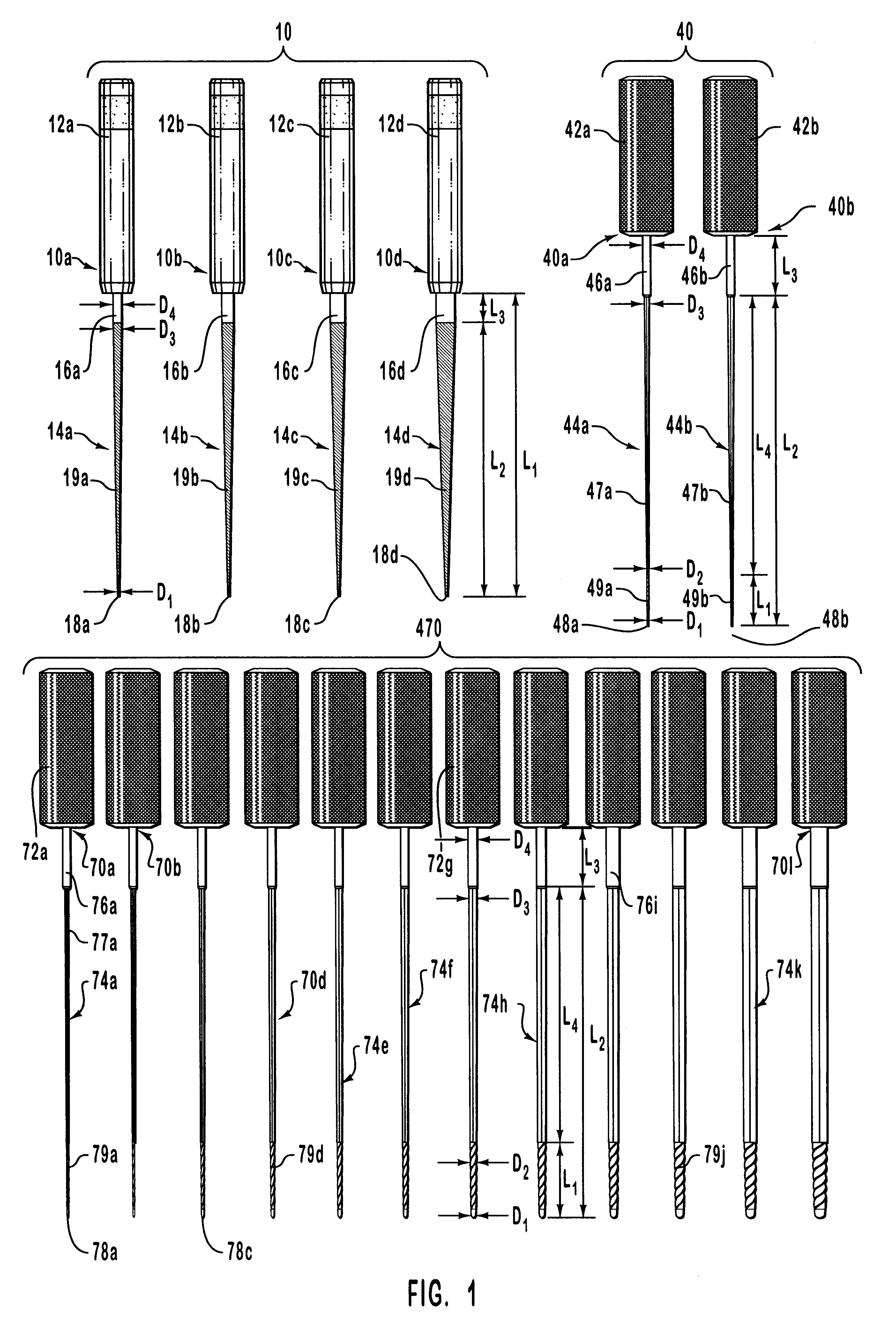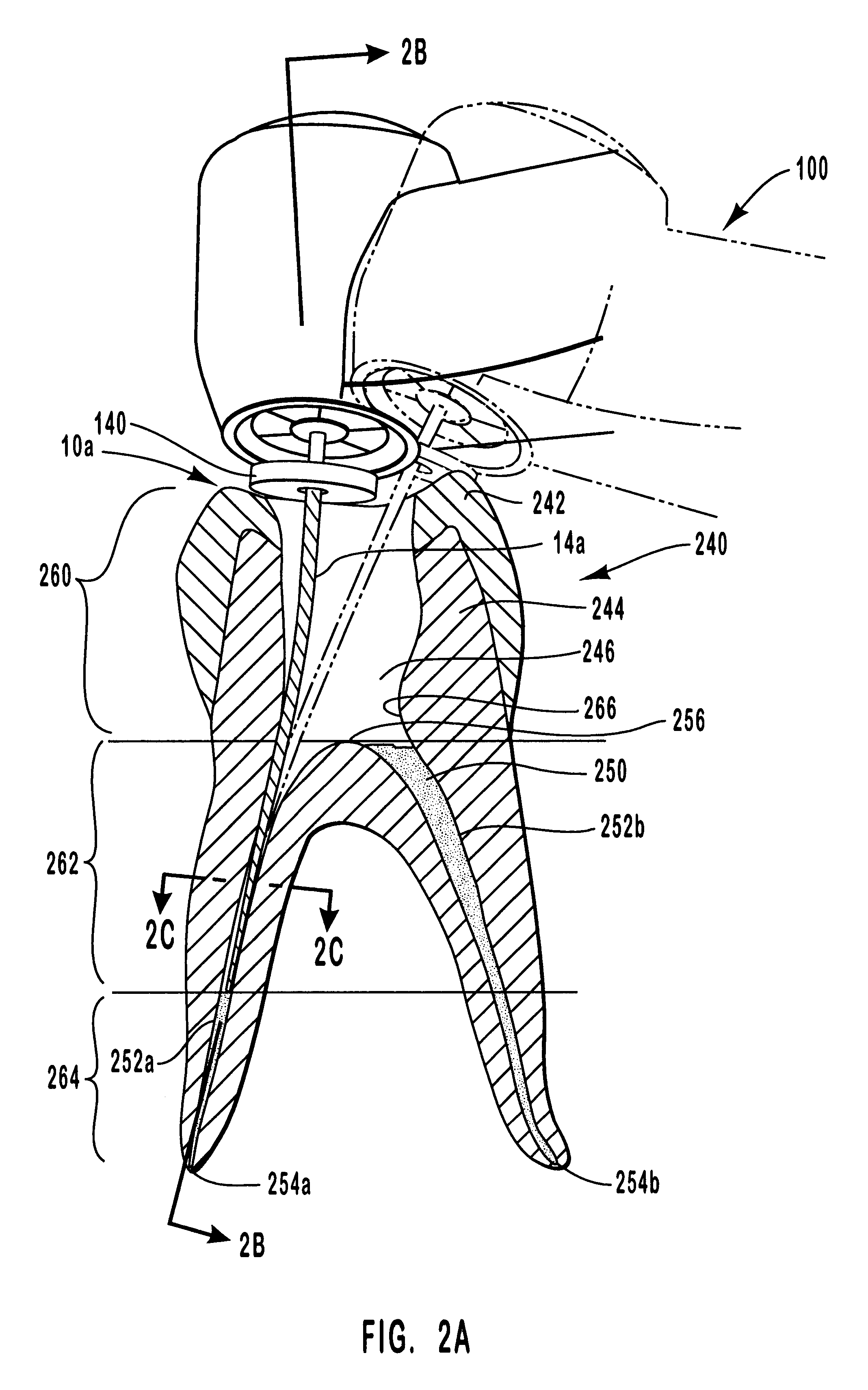Endodontic systems and methods for preparing upper portions of root canals with increasingly rigid files
a technology of endodontic systems and upper parts, applied in the field of endodontic systems and, can solve the problems of reducing flexibility, increasing the likelihood of files being moved, and unable to move files in a manner
- Summary
- Abstract
- Description
- Claims
- Application Information
AI Technical Summary
Benefits of technology
Problems solved by technology
Method used
Image
Examples
examples 1-2
are hypothetical examples presented solely to illustrate some embodiments of the present invention. Note that reference is made in Example 1 to FIG. 1 and FIGS. 6A-D. Example 1 provides a discussion of the use of the three sets of instruments identified at 10, 40 and 70 in FIG. 1 to prepare a root canal. Example 2 provides a discussion of the use of set 10 to clean the operative middle portion followed by cleaning of the apical root portion through delivery of an irrigant. The shapes and dimensions of the embodiments of endodontic file instruments provided herein are merely illustrative, but not limiting, of the variety of endodontic file instruments that are manufactured according to the present invention. The hypothetical examples are not to be construed as limiting the spirit and scope of the invention as these hypothetical examples were produced in furtherance of reducing the present invention to practice.
example 1
This example describes, in relation to FIG. 1 and FIGS. 6A-6D, an exemplary system and method for cleaning a root canal after the root canal has been properly accessed. After a tooth has been identified as requiring root canal therapy, an x-ray image is obtained in order to determine the state of health of a tooth as well as the structure and anatomical characteristics of the tooth. After all carious tissue and any old fillings have been removed, a dam is installed. The pulp chamber is then opened so that adequate access can be gained to the anatomical root canal. Access is gained by removing the top of the pulp chamber, preferably with an appropriate diamond bur instrument. The contents in the pulp chamber are then removed with the aid of appropriate irrigants. Examples of appropriate irrigants include hydrogen peroxide, primarily for use in the canals of living teeth, or sodium hypochlorite, primarily for the canals in necrotic teeth. If desired a cuspidectomy may be performed.
It ...
example 2
This example describes an exemplary system for cleaning a root canal without abrasively cleaning the apical portion. The apical portion is cleaned after the operative middle portion has been cleaned with set 10 as set forth in Example 1. Access into the apical portion has been improved through the use of set 40 as described in Example 1. Cleaning of the apical portion is then initiated by inserting a cleaning instrument into the apical portion as shown in FIGS. 5A-5B and delivering irrigants. The cleaning instrument is a cannula 360 of an endodontic irrigator tip 320, as previously described in reference to FIGS. 5A-5B. After syringe 390 has been used to deliver irrigants into root canal 254b, the irrigants and any remaining debris are removed by aspiration via irrigator tip 320 coupled to an aspirator.
Note in addition to set 10 and set 40 being disposable after use, irrigator tip 320 is also preferably disposable. Note also that instead of a large set of instruments like set 70, on...
PUM
| Property | Measurement | Unit |
|---|---|---|
| distance | aaaaa | aaaaa |
| length | aaaaa | aaaaa |
| diameters | aaaaa | aaaaa |
Abstract
Description
Claims
Application Information
 Login to View More
Login to View More - R&D
- Intellectual Property
- Life Sciences
- Materials
- Tech Scout
- Unparalleled Data Quality
- Higher Quality Content
- 60% Fewer Hallucinations
Browse by: Latest US Patents, China's latest patents, Technical Efficacy Thesaurus, Application Domain, Technology Topic, Popular Technical Reports.
© 2025 PatSnap. All rights reserved.Legal|Privacy policy|Modern Slavery Act Transparency Statement|Sitemap|About US| Contact US: help@patsnap.com



